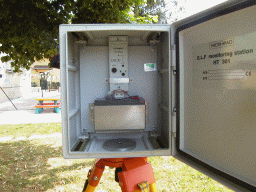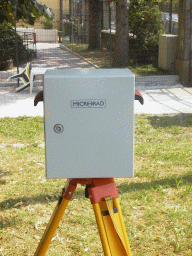Can electrosmog be reduced?
We have already mentioned that there are specific and
accurate probes (figures 1, 2)
to detect and measure
electromagnetic radiations![]() for the various sections of their wide spectrum.
for the various sections of their wide spectrum.
|
|
|
There are private Centers and public Services specialized in environmental and population surveillance. They can suggest how to correct any situations which do not conform to regulations, or how to improve the way we use various apparatus in order to reduce our exposure to radiation. (In this regard, do not be fooled by all those gadgets advertized as miraculous but absolutely useless, like the small plastic buttons to stick on your mobile phone, or cactus plants near the computer or in front of the window, which are supposed to absorb only "bad waves".)
It must be underlined that
risk![]() perception and acceptability (figure 3) are different if the risk
is liberally chosen or if, instead, it is imposed; in other words,
when the risk brings no advantages for the person running the risk, but only for others - as in the case of the radio base stations, antennae and repeaters, and the use of the mobile phone (similar to the risk from "active" or "passive" smoking).
perception and acceptability (figure 3) are different if the risk
is liberally chosen or if, instead, it is imposed; in other words,
when the risk brings no advantages for the person running the risk, but only for others - as in the case of the radio base stations, antennae and repeaters, and the use of the mobile phone (similar to the risk from "active" or "passive" smoking).
 |
| Fig 3: Real
and perceived risks in various activities and tecknologies. The light line
indicates the trend when the two risks are equal. (Credit: Bruzzi, 1995) |
Istitutional Services for further reference:
- APAT, National Agency for Environmental Protection and Technical Services.
- ARPA, Regional Agency for Environment and Prevention (e.g. ARPA EMILIA ROMAGNA)
These agencies adopt national and regional regulations and follow up the recommendations of studies and evaluations made by scientific committees, including the following:
- OMS, World Health Organization
- IRPA, International Agency for Radiation Protection
- ICNIRP, International Commission on Non Ionizing Radiation Protection
- IEC, International Electrotechnic Committee
- IEEE, Institute of Electrical and Electronic Engineers
- ISPESL, Higher Istitute for Prevention and Safety at Work
- CEI, Italian Electrotechnical Committee
- ISS, Higher Institute of Health
- CNR, National Research Council
Italian technical guides and national regulations follow
international recommendations
very closely
and are often even more
restrictive.
In the current climate, this could even be seen as a bad thing, because if you demand "over-protection" you may introduce "real risks" in order to prevent "possible risks".
The best help would be to provide a reliable evaluation of the cost/benefit ratio
for the most urgent interventions in order to
justify![]() the relative choices.
the relative choices.
We are glad to say that Bologna University, besides nurturing a strong interest in scientific research into the impact of physical agents on the environment and our health, has always been very attentive to professional training in this field. Over 40 years ago it was the first University to offer professional training courses, which then developed into a Specialist School.
.....So, specialized and expert operators do exist – put your trust in them!!!.....

